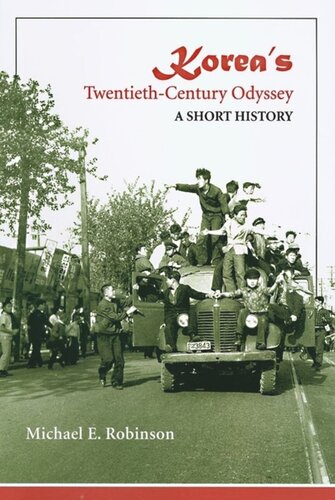

Most ebook files are in PDF format, so you can easily read them using various software such as Foxit Reader or directly on the Google Chrome browser.
Some ebook files are released by publishers in other formats such as .awz, .mobi, .epub, .fb2, etc. You may need to install specific software to read these formats on mobile/PC, such as Calibre.
Please read the tutorial at this link: https://ebookbell.com/faq
We offer FREE conversion to the popular formats you request; however, this may take some time. Therefore, right after payment, please email us, and we will try to provide the service as quickly as possible.
For some exceptional file formats or broken links (if any), please refrain from opening any disputes. Instead, email us first, and we will try to assist within a maximum of 6 hours.
EbookBell Team

4.1
60 reviewsFor more than half of the twentieth century, the Korean peninsula has been divided between two hostile and competitive nation-states, each claiming to be the sole legitimate expression of the Korean nation. The division remains an unsolved problem dating to the beginnings of the Cold War and now projects the politics of that period into the twenty-first century. Korea’s Twentieth-Century Odyssey is designed to provide readers with the historical essentials upon which to unravel the complex politics and contemporary crises that currently exist in the East Asian region. Beginning with a description of late-nineteenth-century imperialism, Michael Robinson shows how traditional Korean political culture shaped the response of Koreans to multiple threats to their sovereignty after being opened to the world economy by Japan in the 1870s. He locates the origins of both modern nationalism and the economic and cultural modernization of Korea in the twenty years preceding the fall of the traditional state to Japanese colonialism in 1910.
Robinson breaks new ground with his analysis of the colonial period, tracing the ideological division of contemporary Korea to the struggle of different actors to mobilize a national independence movement at the time. More importantly, he locates the reason for successful Japanese hegemony in policies that included—and thus implicated—Koreans within the colonial system. He concludes with a discussion of the political and economic evolution of South and North Korea after 1948 that accounts for the valid legitimacy claims of both nation-states on the peninsula.